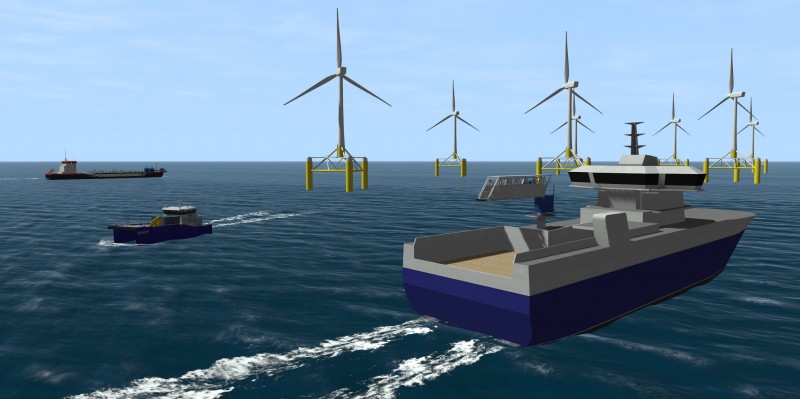The path towards zero emission shipping
MARIN is actively involved in making Zero Emission Shipping become a reality.
The Dutch Maritime Masterplan: lauching customer ships of DMO and Rijksrederij, and commercial ships of the KVNR members
Zero emission shipping is top on the agenda of our sector. The paths to get there and the final solutions are different and depend on many aspects, such as the ship type, the operation, fuel, technology availability and (anticipated) costs of course. We know zero emission shipping will not be feasible for all ships in the coming 10-20 years but with a lifetime of 30 years there should be a clear focus on the future zero emission technologies.
In October we launched our ZERO JIP. With 19 participants we aim to design, build and test prototype Engine Rooms of the Future (see www.marin.nl/jips/zero). To do so we are currently building our Zero Emission Lab; the modular lab-scale replica of the Engine Room of the Future, where we are bringing control, power and energy technologies together, such as clean fuel combustion engines, fuel cells, batteries, hydrogen and methanol in an electrical grid coupled to a propeller and other consumers. We will be able to provide the sector with the answers it needs to make steps forward.
Given the huge impact, we are also involved in the early ‘explorative’ ship design phase. In close cooperation with EU partners, MARIN has set up a database (https://sustainablepower.application.marin.nl) of energy carriers with their energy densities, specific emissions and costs, and of energy converters with typical sizes, weights and conversion efficiencies. The primary goal is to establish a verified database that can be used for the early assessment of new energy and power system solutions.
To reach zero emission shipping it is clear we need to work together. Therefore, the Dutch Maritime Master Plan has been drafted together with the industry, government and knowledge institutes. It is an ambitious EUR 250 million plan to build 30 zero emission ships by 2030 and to advance our emission reduction knowledge and technologies that enable the whole sector to make huge steps forward. The government will act as a launching customer and the commercial sector will take up the challenge to realise the remaining ships before 2030. Early 2021 the final plans will be presented to the sector and we can form partnerships which will allow us to realise these ambitions in the coming years.


